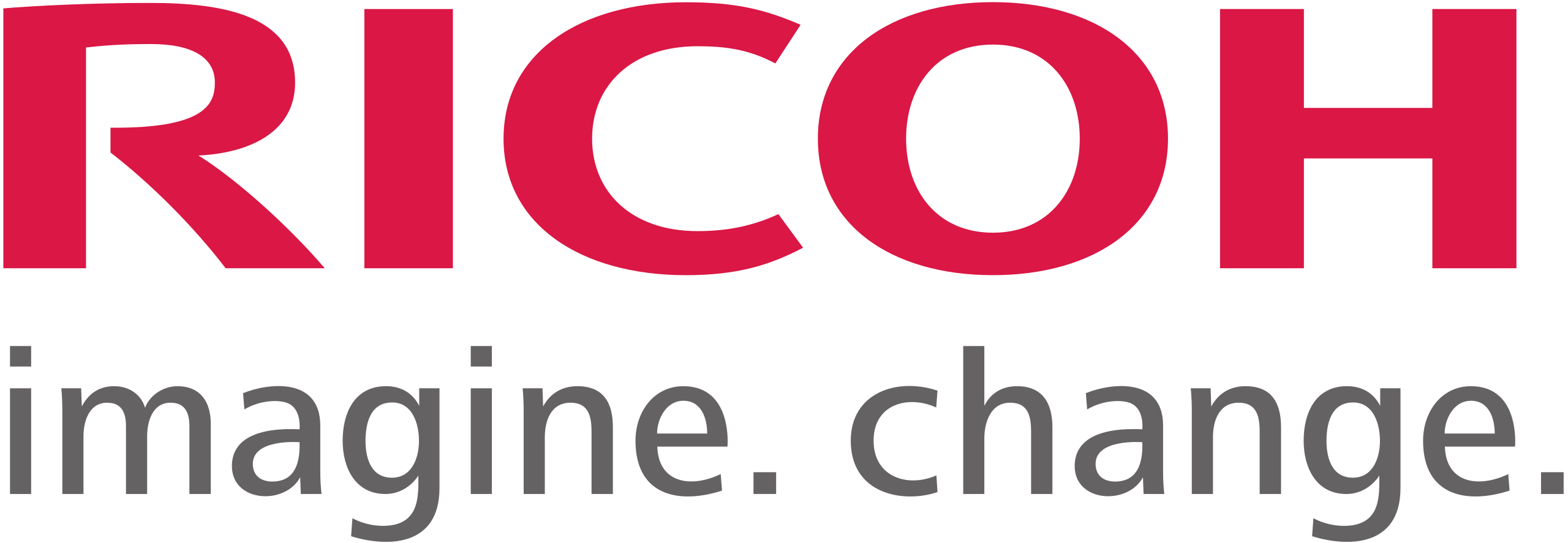7 min read
The New Role of IT in Business Transformation
By:
Kali Mogg
on
December 13, 2021
Updated: July 12, 2024

IT business transformation is crucial for organizations to survive in any industry today. Implementing strategies that prioritize business agility is essential. With the endless rise of new technological innovations, change has become an inevitable and expected part of running a successful business.
Emerging, disruptive technologies have made traditional business models outdated faster than ever – especially with the prevalence of cloud computing. Prioritizing business and IT transformation has become a key element for staying competitive.
This guide will help you understand the vital role your information technology (IT) team plays in implementing transformative business operations. Supported by the right digital strategy, you can stay ahead of the competition and adapt to changing industry conditions and customer demands, today and tomorrow.
Why IT Teams are Key Resources for Planning Business Transformation
Often the terms “business transformation” and “digital transformation” are used interchangeably. And while people effectively use the terms to communicate the same idea, it’s important to remember that what you want, ultimately, is to transform your business, its differentiators, and its value in the market — not to just exchange one business application for another.
According to Harvard Business Review, even when you do refer to “digital transformation,” the technology itself should never come first. That’s a common mistake that business leaders make, which is why 70% of digital transformation initiatives fail to achieve their initial goals, costing companies millions in spent resources and lost opportunities.
Many people think of business transformation as a project with a final outcome or destination that can be solved with the latest and greatest technology solution. However, to be successful, it should really be an ongoing journey that continually advances your organizational culture, business processes, and technology, driving the business forward.
Often, industry and organizational leaders aren’t quite sure how to structure or implement transformative strategies. To effectively plan and adopt such strategies, you need to understand the new role of information technology in business transformation and how a strong IT team can help you identify technology solutions and new processes that fit your business and its culture.
What are three pillars of IT transformation
IT transformation is essential for organizations aiming to stay competitive and innovative in today’s fast-paced digital landscape. The process revolves around three key pillars:
Technology
Cloud Computing: Embracing cloud technologies to enable scalability, flexibility, and cost-efficiency.
Automation: Implementing automated processes to enhance efficiency and reduce human error.
Cybersecurity: Ensuring robust security measures to protect data and systems from cyber threats.
Process
Agile Methodologies: Adopting agile frameworks to increase flexibility, responsiveness, and collaboration.
DevOps Practices: Integrating development and operations to streamline workflows and accelerate delivery.
Data Management: Leveraging data analytics and big data to drive informed decision-making and innovation.
People
Skill Development: Investing in training and upskilling employees to keep pace with technological advancements.
Change Management: Facilitating smooth transitions through effective change management strategies.
Collaboration: Fostering a culture of collaboration and communication across departments and teams.
What is the IT transformation process?
Transforming your IT infrastructure is a multi-step journey that involves meticulous planning and execution. Here’s a breakdown of the IT transformation process:
assessment and planning
Current State Analysis: Evaluating existing IT infrastructure, processes, and capabilities.
Goal Setting: Defining clear objectives and desired outcomes for the transformation.
Roadmap Development: Creating a detailed plan outlining the steps, timeline, and resources required.
infrastructure modernization
Cloud Migration: Moving applications and data to the cloud for enhanced performance and flexibility.
System Upgrades: Updating hardware and software to the latest versions to ensure compatibility and efficiency.
Network Optimization: Improving network architecture to support increased data flow and connectivity.
process optimization
Agile Adoption: Implementing agile methodologies to enhance project management and delivery.
DevOps Integration: Merging development and operations teams to streamline workflows and reduce bottlenecks.
Automation Implementation: Introducing automation tools to handle repetitive tasks and improve productivity.
data and analytics
Data Integration: Consolidating data from various sources into a unified system for better accessibility.
Analytics Tools: Deploying advanced analytics tools to extract actionable insights from data.
Data Governance: Establishing policies and procedures to ensure data accuracy, security, and compliance.
change management
Communication: Keeping all stakeholders informed and engaged throughout the transformation process.
Training Programs: Providing comprehensive training to equip employees with the necessary skills.
Support Systems: Offering support and resources to help employees adapt to new tools and processes.
continuous improvement
Performance Monitoring: Regularly tracking progress and performance against set goals.
Feedback Loops: Collecting feedback from users and stakeholders to identify areas for improvement.
Iterative Refinement: Continuously refining processes and technologies to enhance efficiency and effectiveness.
The Difference Between IT and Software Development
Over the last decade, the saying “every company is a software company” has become an increasingly common refrain in business and digital transformation circles. Applications and services allow modern businesses to manage customer relations, connect to partners and supplies, manage inventory and billing, and so much more.
Identifying the technology capabilities your business relies on – and the expertise that powers those capabilities — is critical for your organization’s transformation efforts. Whether you work with internal or external IT experts, you need to understand who you’re working with and what they do.
Within the tech industry, there are generally two broad categories of roles of experts with computer science knowledge:
- Operations: System or database administrators, IT security experts, IT help desk staff, Chief Information Officer (CIO).
- Software development or engineering: Writing, creating, and patching software applications and services. The main difference between these roles is whether they are coding with an existing toolset (developers) or building the tools and data systems needed (engineering).
Your business may not need to retain all of these roles in-house, especially if you use Software-as-a-Service (SaaS) business applications, managed IT services, or IT consulting on a per-project or ongoing basis.
Depending on whether you have the internal expertise you need, your on-staff team or Standley Systems can help you evaluate your business transformation needs and devise a plan for how your IT infrastructure can be improved with specific products and services.
Connecting IT and Software with Transformative DevOps Practices
Consulting IT and software development experts can also help you integrate DevOps practices into your business. As the name implies, DevOps methodologies involve combining operations processes into the software development lifecycle.
This allows businesses to save time and money and deliver new, innovative solutions faster and more iteratively, which improves cross-team collaboration, customer satisfaction, and business profits.
Instead of keeping operations and development teams siloed and isolated from one another, DevOps engineers allow technology organizations to accelerate and automate application development, deployment, and delivery. These components are key to long-term business transformation because they allow organizations to quickly pivot to integrate, test, and update new capabilities as they emerge.
How do IT and development teams affect business transformation?
As we touched on earlier, while the two terms are often used synonymously, the reality is the digital transformation (DX) should represent one part of broader business transformation efforts.
Selecting the right technology solutions to carry your business into the ever-changing future is key, but that doesn’t work if your organizational culture and business processes aren’t equally set up for success. Your IT and development teams can help you implement ongoing culture and process transformation that keeps your business competitive.
What role can systems administration teams play?
Any business that’s preparing for growth, expanding into new markets, or trying to deliver new products and services needs to make sure their operations or system administrations teams are part of their business transformation plans.
Today, software availability is more important than ever. IT teams are critical for ensuring your software is deployed and delivered successfully, allowing customers and partners to access the information they need to engage with your business.
Businesses are judged on how well they leverage existing technology to deliver new digital customer experiences quickly and seamlessly. Organizations need IT infrastructure that offers scalability and flexibility, especially when consumer interest and server traffic surge.
IT contributes to business success by ensuring that cloud infrastructure is ready to scale to surging demand, secured against new cyber threats, and built with fault tolerance that avoids costly unplanned downtime.
What role can software development or engineering teams play?
Software development teams help transform business by offering customers product and service experiences that integrate the latest that the tech industry has to offer.
Now, businesses across all industries offer remote appointments, fast delivery for physical products, remote inventory management, and more. Whether it’s a healthcare or a banking app, customers and clients expect intuitive user interfaces, real-time data updates, and more
By working with operations teams to develop DevOps pipelines, development and engineering staff can help speed application development and delivery. Not only will this allow your organization to more quickly deliver the digital experiences that your customers expect, but it will also set up your business for future success. Then, your business can adopt and implement tomorrow’s innovations in digital technology into your products and services.
Develop transformative business strategies with Standley
Strategizing and implementing corporate strategy is difficult, especially without the in-house technical expertise to guide your way. At Standley Systems, we’ve used our industry expertise and to transform how businesses operate and offer value to their customers, in Oklahoma and beyond.
Ready to see what transformed business operations can look like in your industry? Contact us today for an assessment of your business transformation goals and strategy.

 800-522-3725
800-522-3725 info@standleys.com
info@standleys.com Support
Support











